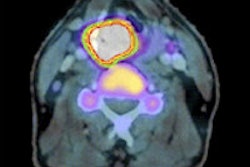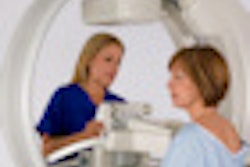Researchers at the Oak Ridge National Laboratory are working to develop an awake SPECT imaging method that they believe shows promise for providing clear images of the brains of children, the elderly, and people with Parkinson's and other diseases without using restraints.
After the subject is injected with GE Healthcare's DaTScan ioflupane I-123 injection radiotracer, the awake SPECT imaging method provides motion compensation reconstruction, which removes blur caused by motion and allows physicians to get a transparent picture of the functioning brain without anesthetics that can mask conditions and alter test results, according to Oak Ridge National Laboratory.
They presented their initial work in an article published online March 27 in the Journal of Nuclear Medicine. The study was performed in collaboration with Thomas Jefferson National Accelerator Laboratory and Johns Hopkins University, and utilizes a SPECT scanner and awake, unanesthetized, and unrestrained mice that have been injected with DaTScan.
With awake SPECT imaging, DaTScan, and other molecular probes, the researchers said they hope to develop new, more effective therapies for an assortment of conditions and diseases while contributing to pharmaceutical drug discovery, development, and testing. The technology also could help with real-time stabilization and registration of targets during surgical intervention, they said.



















